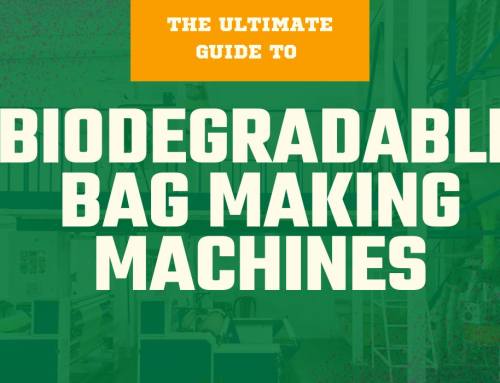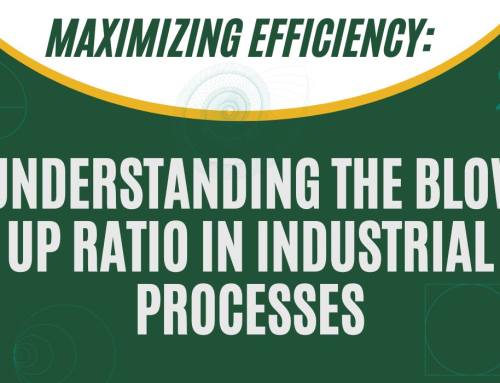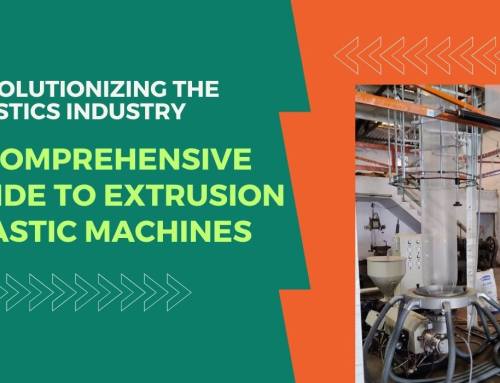Introducing the groundbreaking solution to the global packaging problem the Compostable Bag-Making Machine. In a world where sustainability is more important than ever, this innovative technology offers a glimpse into the future of packaging.
This machine revolutionizes the way we manufacture packaging materials by producing compostable bags that are eco-friendly and functional. With our cutting-edge technology, businesses can now meet the growing demands for sustainable packaging solutions while reducing their ecological footprint.
Designed to integrate seamlessly into existing manufacturing processes, the Compostable Bag Making Machine allows for efficient and cost-effective production. With customizable features and high-quality output, it caters to the diverse needs of businesses across industries.
Not only does this machine align with the values of conscious consumers, but it also presents a unique marketing opportunity for brands to enhance their brand image and attract eco-conscious customers. By embracing this future-forward technology, businesses can lead the way toward a more sustainable future.
Join the movement towards sustainability with the Compostable Bag Making Machine – the game-changer in the world of packaging.
The Need for Compostable Packaging
As the world grapples with the mounting issue of plastic pollution, the demand for sustainable packaging solutions has become increasingly urgent. Traditional plastic bags and packaging materials have a devastating impact on the environment, contributing to the accumulation of non-biodegradable waste, marine life endangerment, and the depletion of natural resources.
Consumers, businesses, and governments alike are now recognizing the pressing need to transition towards more eco-friendly alternatives. The growing awareness of the environmental consequences of single-use plastics has driven a shift in consumer behavior, with a growing preference for products that align with sustainable and ethical practices. Businesses, in turn, are under mounting pressure to adopt packaging solutions that meet the evolving demands of the market and reduce their carbon footprint.
This shift towards sustainability has given rise to the development of compostable packaging materials, which offer a promising solution to the global packaging crisis. Compostable bags and packaging, made from renewable and biodegradable resources, can break down naturally, leaving behind no harmful residues. This not only reduces the burden on landfills and oceans but also contributes to the circular economy by replenishing the soil with valuable nutrients. As the world moves towards a more sustainable future, the need for innovative technologies that enable the production of compostable packaging has become increasingly pressing.
What is a Compostable Bag Making Machine?
A compostable bag making machine is a specialized piece of equipment designed to manufacture eco-friendly, biodegradable bags and packaging materials. Unlike traditional plastic bag production, this machine utilizes renewable and compostable raw materials, such as plant-based polymers, cellulose, or even agricultural waste, to create packaging that can be safely disposed of through composting or other organic waste management systems.
At the heart of this technology is a sophisticated process that transforms these sustainable materials into high-quality, functional bags and packaging solutions. The machine is engineered to integrate seamlessly into existing manufacturing workflows, allowing businesses to transition seamlessly towards more sustainable practices without disrupting their operations.
The compostable bag making machine is equipped with advanced features that enable precise control over the bag’s size, thickness, and design, ensuring consistent quality and performance. This versatility allows the machine to cater to the diverse needs of various industries, from food and retail to e-commerce and logistics. By offering a sustainable alternative to traditional plastic packaging, the compostable bag making machine plays a crucial role in addressing the global packaging crisis and paving the way for a more environmentally-conscious future.
Advantages of Using a Compostable Bag Making Machine
The adoption of a compostable bag making machine offers a multitude of benefits that extend beyond the environmental impact, making it a compelling solution for businesses across various sectors.
One of the primary advantages is the positive environmental impact. By producing bags and packaging that are designed to break down naturally, the machine helps to reduce the volume of non-biodegradable waste that ends up in landfills, oceans, and other natural habitats. This aligns with the growing consumer demand for eco-friendly products and contributes to a more sustainable future.
In addition to its environmental benefits, the compostable bag making machine also offers economic advantages. The use of renewable and often locally-sourced raw materials can help to stabilize material costs, providing businesses with a more predictable and cost-effective supply chain. Furthermore, the machine’s ability to integrate seamlessly into existing manufacturing processes can lead to improved operational efficiency and reduced overhead costs.
Another key advantage of the compostable bag making machine is its versatility. The machine’s customizable features allow businesses to tailor the bags and packaging to their specific needs, whether it’s adjusting the size, thickness, or design to suit their product requirements. This flexibility enables businesses to maintain their brand identity and meet the evolving needs of their customers while embracing sustainable practices.
Finally, the adoption of a compostable bag making machine can also serve as a powerful marketing tool, allowing businesses to showcase their commitment to sustainability and appeal to the growing segment of eco-conscious consumers. By positioning their brand as a leader in sustainable packaging, businesses can enhance their reputation, build customer loyalty, and differentiate themselves in a competitive market.
How Does a Compostable Bag Making Machine Work?
The compostable bag making machine utilizes a sophisticated manufacturing process to transform renewable and biodegradable raw materials into high-quality, functional bags and packaging solutions. The core of this process involves several key steps:
Raw Material Preparation: The machine begins by feeding in the compostable raw materials, such as plant-based polymers, cellulose, or agricultural waste. These materials are carefully selected and processed to ensure consistent quality and optimal performance.
Extrusion: The raw materials are then fed into an extrusion system, where they are heated and melted, creating a homogeneous polymer melt. This melt is then forced through a die, shaping it into a continuous sheet or film.
Bag Forming: The extruded sheet or film is then fed into a bag forming section, where it is folded, sealed, and cut to the desired size and shape. This process is precisely controlled to ensure the bags meet the specified dimensions and design requirements.
Printing and Finishing: Depending on the application, the compostable bags may undergo additional printing or finishing processes, such as the application of logos, barcodes, or other customizations, to meet the branding and functional needs of the customer.
Quality Control: Throughout the manufacturing process, the machine is equipped with advanced sensors and monitoring systems to ensure the consistent quality and performance of the compostable bags. This includes checks for thickness, strength, and biodegradability.
The entire process is designed to be highly efficient and scalable, allowing businesses to produce large quantities of compostable bags and packaging with minimal waste and energy consumption. By integrating this innovative technology into their operations, companies can seamlessly transition towards more sustainable packaging solutions and meet the growing demands of the eco-conscious market.
Types of Materials Used in Compostable Bag Making
The compostable bag making machine is designed to work with a variety of renewable and biodegradable raw materials, each with its own unique properties and advantages. Some of the most commonly used materials in compostable bag production include:
Plant-Based Polymers: These are biopolymers derived from renewable sources, such as corn, sugarcane, or potato starch. They are known for their excellent biodegradability and compostability, as well as their ability to be molded into a wide range of packaging solutions.
Cellulose: Cellulose, the primary structural component of plant cell walls, is another popular material used in compostable bag making. Derived from sources like wood pulp or agricultural waste, cellulose-based bags offer a natural, paper-like texture and can be easily composted.
Agricultural Waste: Innovative manufacturers are increasingly turning to agricultural waste, such as rice husks, wheat straw, or corn stover, as a raw material for compostable bags. This not only reduces waste but also creates a value-added product from otherwise discarded materials.
Blended Composites: To optimize the performance and properties of compostable bags, manufacturers may blend different materials, such as plant-based polymers and cellulose, to create composite structures. These blended materials can offer enhanced strength, flexibility, and barrier properties.
The selection of raw materials for a compostable bag making machine is a crucial decision, as it directly impacts the final product’s performance, sustainability, and cost-effectiveness. Manufacturers must carefully evaluate the unique characteristics of each material, as well as their compatibility with the machine’s capabilities, to ensure the production of high-quality, eco-friendly packaging solutions.
Comparing Compostable Bag Making Machines
As the demand for sustainable packaging solutions continues to grow, the market has seen the emergence of various compostable bag making machines, each with its own set of features and capabilities. When selecting the right machine for their needs, businesses must carefully evaluate and compare the options to ensure they make an informed decision.
One key factor to consider is the machine’s production capacity and scalability. Some models are designed for small-scale, on-demand production, while others are engineered for high-volume, industrial-scale manufacturing. Businesses must assess their current and future packaging needs to determine the appropriate machine size and output.
Another important aspect to compare is the range of materials the machine can handle. Some compostable bag making machines are optimized for specific raw materials, such as plant-based polymers or cellulose, while others offer greater versatility, allowing for the use of blended composites or agricultural waste.
The machine’s level of automation and integration with existing manufacturing processes is also a crucial consideration. Highly automated models can streamline production and reduce labor costs, while machines that seamlessly integrate with existing workflows can minimize disruptions and facilitate a smooth transition towards sustainable packaging.
Businesses should also evaluate the machine’s customization capabilities, as the ability to tailor the size, thickness, and design of the compostable bags can be a significant advantage in meeting the diverse needs of their customers.
Finally, the overall cost of ownership, including the machine’s initial investment, operating expenses, and maintenance requirements, should be carefully weighed against the long-term benefits of adopting a compostable bag making machine.
By thoroughly comparing the features and capabilities of different compostable bag making machines, businesses can make an informed decision that aligns with their sustainability goals, operational requirements, and financial considerations.
Case Studies: Successful Implementation of Compostable Bag Making Machines
To illustrate the real-world impact of compostable bag making machines, let’s explore a few case studies of businesses that have successfully integrated this technology into their operations.
Case Study 1: Sustainable Grocery Chain
A leading grocery chain, committed to reducing its environmental footprint, implemented a compostable bag making machine in its in-store packaging facility. By producing their own compostable bags on-site, the chain was able to eliminate the use of traditional plastic bags, reducing waste and aligning with the values of their eco-conscious customer base. The machine’s customization capabilities allowed the chain to design bags that prominently featured their brand, further enhancing their sustainability messaging.
Case Study 2: E-commerce Logistics Provider
An e-commerce logistics provider, facing increasing pressure from customers to adopt more sustainable packaging, invested in a high-capacity compostable bag making machine. The machine’s ability to seamlessly integrate with their existing fulfillment processes enabled the provider to transition to compostable bags without disrupting their operations. The move not only reduced their environmental impact but also allowed them to offer a unique value proposition to their clients, leading to increased customer satisfaction and retention.
Case Study 3: Sustainable Cosmetics Brand
A rapidly growing cosmetics brand, known for its commitment to sustainability, decided to invest in a compostable bag making machine to package its products. By producing their own compostable bags, the brand was able to ensure the consistent quality and branding of their packaging, while also reducing their reliance on third-party suppliers. The machine’s flexibility allowed the brand to experiment with different materials and designs, ultimately creating a unique and eco-friendly packaging solution that resonated with their target audience.
These case studies demonstrate the diverse applications and tangible benefits of compostable bag making machines across various industries. By embracing this innovative technology, businesses can not only reduce their environmental impact but also enhance their brand reputation, improve customer loyalty, and gain a competitive edge in the rapidly evolving sustainable packaging market.
Challenges and Limitations of Compostable Bag Making Machines
While the compostable bag making machine offers a promising solution to the global packaging crisis, it is not without its challenges and limitations. Understanding these potential obstacles is crucial for businesses considering the adoption of this technology.
One of the primary challenges is the availability and cost of compostable raw materials. The production of plant-based polymers, cellulose, and other biodegradable materials can be more resource-intensive and expensive than traditional plastic manufacturing. Businesses must carefully evaluate the long-term cost implications and explore strategies to mitigate the financial impact, such as leveraging economies of scale or exploring alternative feedstock options.
Another challenge is the potential for inconsistencies in the quality and performance of compostable bags. Factors such as variations in raw material composition, production processes, and environmental conditions can affect the strength, durability, and compostability of the final product. Manufacturers must implement rigorous quality control measures and continuously optimize their processes to ensure consistent, high-quality output.
The limited infrastructure for composting and organic waste management in certain regions can also pose a challenge for the widespread adoption of compostable packaging. Without the necessary collection and processing facilities, the environmental benefits of compostable bags may not be fully realized. Businesses and policymakers must work together to develop comprehensive waste management systems that support the circular economy.
Additionally, the initial investment required for a compostable bag making machine may be a deterrent for some businesses, particularly smaller-scale operations. Careful financial planning and consideration of long-term cost savings and marketing benefits are necessary to justify the upfront investment.
Finally, the perception and understanding of compostable packaging among consumers can also present a challenge. Educating the public on the benefits and proper disposal methods of compostable bags is crucial to driving widespread adoption and ensuring that the packaging is not mistaken for traditional plastic.
By addressing these challenges through technological advancements, collaborative efforts, and public awareness campaigns, businesses can overcome the limitations of compostable bag making machines and fully realize the potential of this sustainable packaging solution.
Conclusion:
The Future of Sustainable Packaging with Compostable Bag Making Machines
As the world grapples with the pressing issue of plastic pollution, the compostable bag making machine stands as a beacon of hope, offering a sustainable and innovative solution to the global packaging crisis. This groundbreaking technology, with its ability to transform renewable and biodegradable raw materials into high-quality, functional bags and packaging, represents a significant step towards a more eco-friendly future.
The adoption of compostable bag making machines by businesses across various industries has the potential to drive a paradigm shift in the way we approach packaging. By embracing this technology, companies can not only reduce their environmental impact but also capitalize on the growing consumer demand for sustainable products, enhance their brand reputation, and gain a competitive edge in the marketplace.
The versatility and customization capabilities of compostable bag making machines allow businesses to tailor their packaging solutions to meet the diverse needs of their customers, while the seamless integration with existing manufacturing processes ensures a smooth transition towards more sustainable practices.
As the technology continues to evolve, we can expect to see further advancements in the materials, efficiency, and scalability of compostable bag making machines. Innovations in raw material sourcing, production processes, and waste management infrastructure will further strengthen the viability and accessibility of this sustainable packaging solution.
Ultimately, the future of packaging lies in the widespread adoption of compostable bag making machines and the widespread embrace of eco-friendly packaging solutions. By leading the charge towards a more sustainable future, businesses can not only contribute to the protection of our planet but also position themselves as trailblazers in the global movement towards a circular economy.
The Compostable Bag Making Machine is not just a technological marvel, but a testament to the power of innovation and the collective commitment to a greener, more sustainable tomorrow. As we navigate the challenges of the present, this machine offers a glimpse into a future where packaging and the environment can coexist in harmony, paving the way for a more sustainable and prosperous future for all.









Leave A Comment